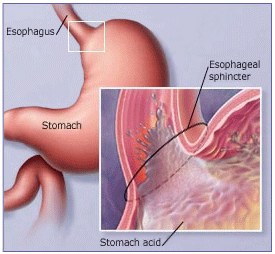The following is the diagnostic of Acid Reflux or GERD approach by a physician:
- Taking a medical history
- Considering a medical history
- The Physical examination
- Valuable information you should provide to your doctor
- Clinical Presentation. When patients present with typical symptoms and no complications, the diagnosis of GERD is usually straightforward. The classic symptoms are heartburn and regurgitation, which may also include dysphagia.
- Diagnostic tests that help. Blood and Stool Tests. Stool tests may show traces of blood that are not visible. Blood tests for anemia should be performed if bleeding is suspected.
- Response to Omeprazole. A recent study demonstrated a potential role for a proton pump inhibitor, omeprazole (Prilosec), in the diagnosis of GERD.
- Radiologic. Only one third of patients with GERD have radiologic signs of esophagitis. Findings include erosions and ulcerations, strictures, hiatal hernia, thickening of mucosal folds and poor distensibility.
- Endoscopy. It is widely used in GERD, including for identifying and grading severe esophagitis, for periodic monitoring of patients with Barrett's esophagus or for screening people at high risk, or when other complications are suspected. It is also now employed as part of various surgical techniques.
- Ambulatory pH Monitoring. Generally considered the diagnostic gold standard for use in patients with GERD. In this study, a pH monitor is placed in the esophagus above the lower esophageal sphincter, and the pH is recorded at given moments in time.
- Manometry. Manometry is a technique that measures muscular pressure. As the muscular action of the esophagus exerts pressure on the tube in various locations, a computer connected to the tube measures it.
 Read More.....
Read More.....






